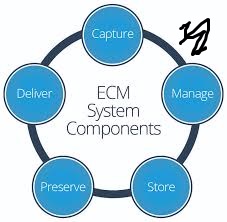What is a CMS?
A Content Management System (CMS) is software tool enabling content to be created,
edited and produced on the website without the need for prior programming background. In the past,
in creating and constantly updating a website, one would require expertise in HTML, CSS, JavaScript, and
PHP among different other programming languages. Web developers had to write code line by line,
for every web page, format or any specific feature, which was very tedious and time consuming when it came to
managing a website. Nonetheless, using a CMS, even a person with next to no technical experience can design,
build, and edit an entire functional website from the ground up and without having to write any code.
A CMS is also an easy-to-use graphical application, where specific knowledge is not obligatory to manage a website,
even a child might do that. In its turn, depending on the type of your enterprise, weblog, painting, or an online store,
a CMS offers all essential tools for design and alteration, as well as enhancement of your site with no need of mastering
programming languages. The following platforms enable the user to have their online presence in a proper
manner without approaching the web developers every once in a while to have petty changes made.
This is one of the most impressive features of CMS platforms, which has made them become
widely used because of the ability to content publishing. Unlike the conventional web development that requires
coding and uploading of every page individually, with CMS, the process is done through the click of a button.
It eliminates chances of errors, saves time, and increases productivity in the organization. This implies that
with the single application, most of what has to do with website management can be done from one interface which is convenient considerate and efficient.
Key Features of a CMS
A CMS is indeed an all-inclusive tool that offers a number of features to ease website creation and management. That is why software is an optimum choice for content management, media processing, and design personalization. Here are the most crucial characteristics of CMS platforms:
1. Creating and Updating Pages
Another key purpose of a CMS is the ability of creating and building different web pages easily. The best thing is that instead of writing the line by line code in, the text editor is preprogrammed and provides environments similar to MS Word or Google Docs. These editors provide marquee, text format, tables tools, images insertion tools and hyperlinking options which enhances the ease of creating content.

With a CMS, users can:
Consequently, this software enables the creation of blog posts without concerning themselves with formatting problems.
- This will include product descriptions and images of items that they intend to sell online.
- Include other objects like videos, music and other information graphics.
- Edit individual changes to the layout, style and content of specific pages without affecting other parts of the website on the go.
Some of the CMS platforms even offer versioning capabilities and where such as functionality is enabled users can track the previous versions of the content as well as revert to them if there is the need. It also establishes what can be revert quickly so as to preserve the website’s integrit.
